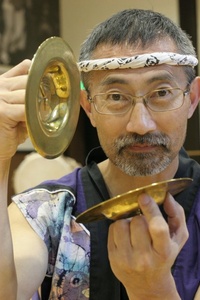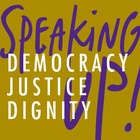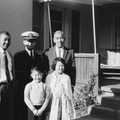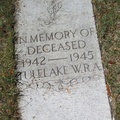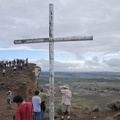Since ancient times, taiko has played an important role in the folklore of Japan. Taiko appear in many Japanese myths and legends, and it is the principal instrument for the folk music of that island nation. In recent times, taiko has taken root in North America, largely among the third and fourth generation descendants of Japanese immigrants (Sansei and Yonsei). Can folklore survive and is it still useful to modern day Americans? Is taiko being used to develop or create a modern folklore here in America?
Folklore can be viewed as the accumulated wisdom, values, customs, and beliefs of a cultural community. Historically, folklore has been passed down across generations primarily in oral (e.g. songs, poems, stories) and non-verbal forms (e.g. music, dance, carvings, artwork) among the common people.
Folklore may include the legends, creation myths, festival dances, parables and proverbs, nursery rhymes, work songs, odes and sagas of a people. It is an ancient and useful way to preserve and pass on a common cultural heritage, and in this way serves to bind people together into a coherent, sustainable community.
Folklore is a tremendous and powerful cultural force. It helps us shape our individual identity, place ourselves in a social-cultural context vis-à-vis our neighbors, and locate ourselves in the larger world community. Folklore affects how we view the world and our relationship to it. The loss or abandonment of folklore—and the cultural demise that this implies—may result in assimilation through adoption of a new folklore, value system, or cultural identity. Or it may lead to social chaos stemming from a loss of individual identity, community cohesion, and resultant disruption of the general social order.
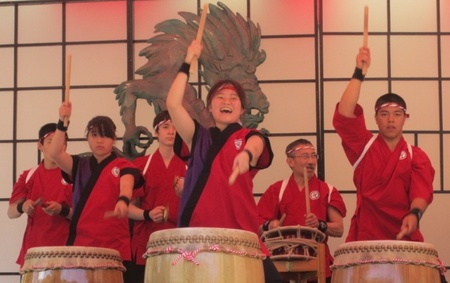
Kaze Daiko playing KAERU at the International District Summer Festival. KAERU is a piece I wrote based on an Okinawan folktale, Kaeru no Tsunahiki (Frog's Tug-of-War), about a time when frogs and farmers unite to overcome a drought and plague of insects that threaten the rice paddy they all rely on for survival. It tries to convey a message of cooperation for mutual benefit, crossing lines, unity in the face of adversity.
In pre-industrial society, folklore was the basic means of passing on traditions, knowledge, and values. In industrial society, folklore became a means of maintaining contact with the homeland or preserving community in a new geographic and social context. Great migrations and wide dispersal of populations made maintenance and development of traditions and folklore much more difficult. Efforts to eliminate or subjugate a people, as in policies of slavery, forced assimilation, and cultural genocide, often drove traditions and folklore underground. But folklore—and the people and communities who carry it on—has proven more resilient than colonizers, racists, and other “culture war” zealots ever imagined.
Now, however, as we enter the “post-industrial” age, global mass media threatens to wipe out all forms of local, regional, and even national folklore, replacing it with corporate-sponsored, commercially profitable “pop” culture instead. In the new corporate-designed and designated “tradition,” values become those of the marketplace, identity a matter of selecting favorite corporate logos, and wisdom something passed on in TV sound bites from our latest media-made stars. The market imperative strives to create one homogenous mass, one global market, in a world where diversity is defined and circumscribed by America’s Top 40.
In the Japanese American community, forces of racism, discrimination, and segregation altered and curtailed the growth and development of our folklore. World War II and America’s concentration camps almost crushed it. Policies of forced assimilation and cultural genocide, similar in some respects to those practiced on American Indians, took a heavy toll. Nihonmachis and Little Tokyos were destroyed, Japanese culture and religion suppressed, language schools closed, the family structure turned upside down, as anything Japanese became a source of suspicion and shame during the period of mass incarceration and on into the immediate post-war years.
Taiko began in the United States largely as a rejection of the notion that Japanese Americans should be ashamed of their heritage. It was a means of asserting one’s identity and, initially at least, a means of defining oneself in opposition to the prevalent stereotypes and expectations of society, which saw Japanese Americans as a quiet, passive, and stoic “Model Minority.” Taiko players, however, were loud, proud, emotional—and often politically active. Simply playing taiko became a liberating activity for many Sansei youth.
Now, however, taiko is no longer viewed as a rebellious activity but as a performing art. No longer confined to small community street fairs and church bazaars, taiko now appears in nightclubs and concert halls and can be heard on TV commercials and Hollywood soundtracks. Fewer taiko players today are drawn to taiko primarily for reasons of personal identity or community service, while more are drawn to the music, the performance experience, or the art.
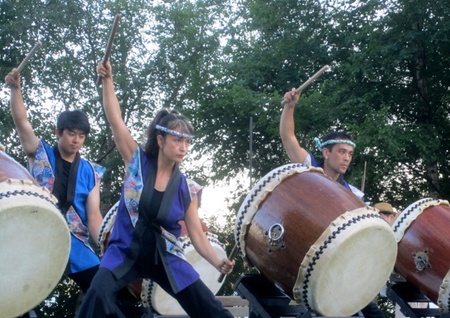
Seattle Kokon Taiko playing ALAMOGORDO at the From Hiroshima to Hope memorial program. ALAMOGORDO is a piece I wrote as part one of a trilogy titled TRINITY 8689—a reference to the first three atomic bomb explosions: at the test site in New Mexico (code-named Trinity), over Hiroshima (on August 6 or 8-6) and over Nagasaki (on August 9 or 8-9). ALAMOGORDO deals with the making of the bomb, GROUND ZERO deals with the immediate aftermath, death and destruction experienced at Hiroshima and Nagasaki, and HIBAKUSHA deals with survival in a nuclear world where we all are, in a sense, survivors.
Nevertheless, taiko remains a valuable cultural resource for the Japanese American community and retains rich possibilities for exploring and developing Japanese American folklore. Several groups have used taiko to tell the story of Amaterasu, Uzume, and the mythic origins of taiko or to explore the issue of America’s concentration camps.
In my own work, we have done pieces based on the bombings of Hiroshima-Nagasaki, an Okinawan folktale, a traditional fishermen’s song, a lion dance, and matsutake hunting, among others. With each piece we try to provide a narrative (on-stage or in program notes) to explain where the piece comes from and its cultural context. In this way, I try to build a modern folklore series—pieces that can tell a tale, evoke a memory, or spur a reflection relating to Japanese American history, tradition, and culture.
Taiko is a tradition in and of itself. Like ikebana or kendo, taiko carries its own aesthetic and inherent beauty. Taiko is rich with possibilities for imparting values, conveying customs, telling stories, reflecting on our history. While it draws substance and knowledge from the old, taiko is not bound by past practice; it continues to develop in new directions.
Today, taiko as a performing art has spread far beyond Japan and the Nikkei community, yet as folklore, it can also help sustain and develop Japanese American culture and be “a force for good” (to echo John Coltrane) in our community. This may be the greatest challenge—and the greatest hope—for taiko’s continued relevance to Nikkei in North America.
*Stanley Shikuma was a moderator/panelist for the “Taiko: The Powerful Expression of Nikkei Identity” sesson during JANM’s National Conference, Speaking Up! Democracy, Justice, Dignity on July 4-7, 2013 in Seattle, Washington. For more information about the conference, visit janm.org/conference2013.
© 2013 Stan Shikuma


